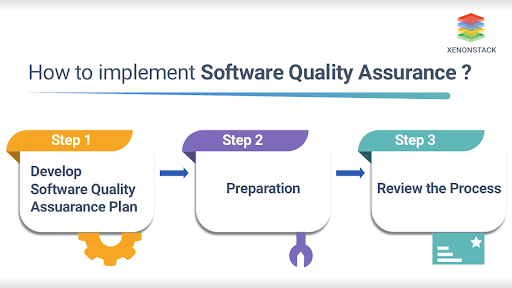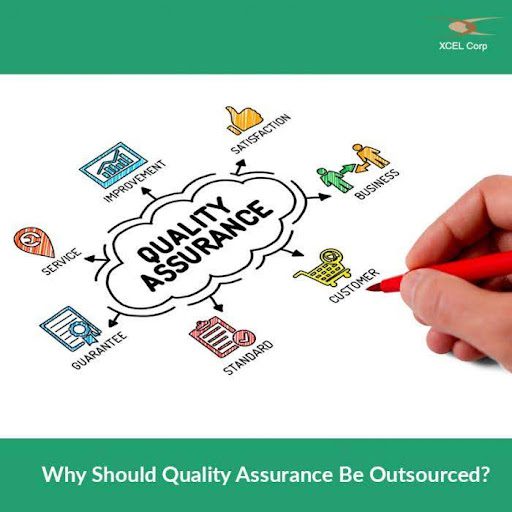Highlights
- Identifies defects early to minimize costly fixes and rework.
- Ensures software meets regulatory standards for critical industries.
- Protects against vulnerabilities with thorough security testing.
- Streamlines process for quicker, more productive development.
- Delivers reliable software that fosters user satisfaction and loyalty.
Ensuring the high quality of software products is key to maintaining a strong position in the fast-paced world of software development. This is where Software Quality Assurance (SQA) comes into play.
SQA is the process that ensures software products and services meet specific criteria set by requirements and user expectations. SQA helps deliver reliable, high-quality software that meets both functional and performance standards. Expert IT consultants like the consultants at Tambena Consulting focus on preventing defects and improving processes to ensure the top-notch quality of your product.
So, let’s see what is software quality assurance and why it is important in detail.
Understanding Software Quality Assurance
Software Quality Assurance is a set of activities that are designed to ensure quality standards while developing software products. From planning to coding, testing, release, and maintenance, SQA covers all.
Unlike quality control which is aimed at finding defects in the finished product, SQA aims to prevent defects from occurring in the first place.
Key Objectives of Software Quality Assurance
The primary objectives of SQA include:
- Ensuring Software Reliability
SQA helps with the consistency of software in various conditions. This minimizes the possibility of unexpected failures.
- Preventing Defects
SQA minimizes the likelihood of defects occurring by implementing checks and balances at each phase of development.
- Improving Process Efficiency
SQA identifies inefficiencies and areas for improvement to enhance the efficiency of development processes. This ensures cost savings and fast delivery.
- Meeting Regulatory Requirements
Some industries like healthcare, finance, and automotive have strict regulations for software. SQA ensures that software products comply with these regulations. In the development of vision pro-education apps, SQA plays a key role in maintaining product quality.
- Enhancing Customer Satisfaction
SQA ensures the software meets or exceeds user expectations fosters. This promotes customer trust and loyalty and boosts the company’s reputation and success.
Components of Software Quality Assurance

SQA is a broad category that includes a variety of activities, methodologies, and tools. Here are some of the main components of SQA:
Quality Planning
This planning includes the criteria and standards that software products must meet to ensure quality. This includes:
- Setting objectives
- Defining metrics
- Determining the scope of quality assurance activities
At this stage SQA team makes Quality Assurance Plans which include strategies, resources, and schedules for quality assurance activities.
Process Definition and Implementation
SQA creates a standardized process for software development and maintenance to ensure consistency. This includes:
- Defining coding standards
- Design principles
- Testing protocols
- Review procedures
These processes ensure that all project members follow the same quality practices. It helps in preventing errors and maintains quality standards.
Testing and Validation
SQA depends a great deal on testing, as it ensures the identification of defects before the software is released. The testing could be:
- Unit Testing
This testing verifies the functionality of individual components or code units.
- Integration Testing
This ensures that different modules or components work together as expected.
- System Testing
Evaluates the overall behavior of the software to ensure it meets requirements.
- Acceptance Testing
Confirms that the software meets the user’s needs and is ready for deployment.
Metrics and Measurement
Metrics are great in determining the quality of the software and the efficiency of the development process. SQA teams can monitor quality trends and make data-driven decisions by monitoring:
- Defect density
- Code coverage
- Test case pass rate
Metrics are also useful for identifying areas for improvement and evaluating the success of quality assurance initiatives.
Audits and Reviews
Both of these are the formal evaluations of processes and products. They ensure that the development team sticks to quality standards and software meets all requirements.
Types of reviews include:
- Code Reviews
Peers evaluate each other’s code to identify issues and ensure adherence to coding standards.
- Design Reviews
Stakeholders assess design documents to ensure they align with requirements and standards.
- Quality Audits
Independent assessments of SQA processes and procedures to verify compliance with established standards.
Software Quality Assurance Approaches
Some approaches that SQA experts can use based on the type of their software are:
Traditional Approach
This approach is also called waterfall mode and includes a sequential process. In this process, each phase of the software development lifecycle is completed before the next one. So, SQA is performed at the end of each phase to ensure requirements have been met at that phase.
This approach includes analysis, design, coding, testing, and maintenance to minimize the errors and defects to meet desired quality standards.
Agile Approach
This approach is flexible and focuses on delivering the software in small increments. This approach connects the development teams and stakeholders for a streamlined development process. This SQA approach is quite popular and focuses on the following to ensure high-quality software products.
- Continuous integration and testing
- Self-organizing teams
- Continuous delivery
- Continuous feedback
DevOps Approach
This approach is a combination of development and IT operations to enhance the efficiency and quality of software products. This approach ensures the fast delivery of software products by focusing on collaboration, automation, and continuous delivery.
Similar to the Agile approach, DevOps transformation consists of continuous testing deployment and integration to create high-quality products. You can have our DevOps consulting services in this regard.
Six Sigma Approach
This approach is based on data to reduce defects and errors in a software product. To improve the quality of software products, this approach uses statistical tools and techniques. This approach is perfect for projects that have a strong emphasis on reducing defects and errors.
Lean Approach
This approach focuses on enhancing the efficiency of the software by waste reduction in the development process. This emphasizes the need for continuous improvement and eliminating non-value-added activities.
Continuous Integration and Continuous Deployment (CI/CD) Approach
As the name suggests this approach focuses on the integration and deployment of software products. This approach emphasizes automation, continuous testing, and delivery of software products.
Test-Driven Development (TDD) Approach
This approach requires writing automated tests before writing the code. This is done to ensure that the code meets the requirements and specifications of the software product. To ensure the high quality of software products, TDD SQA involves:
- Writing test units
- Running the tests
- Refraction the code
Risk-Based Approach
This approach involves identifying and managing the risks associated with software products. To ensure that the software product meets the established standard this approach involves:
- Risk assessment
- Risk mitigation
- Risk monitoring
Why is Quality Assurance Important?

Software quality assurance is quite important as it helps reduce the cost by identifying defects early. It ensures compliance with industry regulations and enhances software security. SQA validates software resilience against cyber threats, protects sensitive data, and minimizes risks.
Moreover, it boosts customer satisfaction by delivering high-quality and reliable software product that promotes trust and loyalty. Ultimately, by safeguarding software quality, SQA protects an organization’s brand reputation associated with software failures.
SQA Best Practices
To maximize SQA effectiveness, organizations can adopt the following practices to promote high quality and efficiency:
- Integrate SQA Early in the Development Lifecycle
Implement SQA practices from the planning phase to catch defects early and ensure quality throughout the project.
- Use Automated Testing Tools
Automation can improve testing efficiency, reduce human error, and ensure comprehensive test coverage.
- Encourage a Quality-First Culture
Promote a culture where everyone on the team, from developers to project managers, is committed to quality. This can be achieved through training, clear communication, and setting quality goals.
- Monitor and Analyze Metrics Continuously
Regularly collect and analyze metrics to assess quality trends, measure performance, and identify areas for improvement.
- Invest in Training and Skill Development
Equip your team with the necessary skills and knowledge to implement SQA practices effectively. This includes training in SQA methodologies, tools, and techniques.
Conclusion
Software quality assurance is the core part of the software development lifecycle. It is important to ensure that the product meets all quality standards. By actively preventing defects and enhancing product efficiency, SQA allows organizations to deliver reliable and high-quality software.
However, doing SQA on a personal scale is challenging. This is where you need Tambena Consulting for their detailed DevOps services to ensure streamlined SQA to enhance your software product quality.
FAQs
What is quality assurance in software testing?
Quality assurance in software testing is done to detect potential quality issues early on while developing the software product. This ensures that the software fully meets user expectations and quality criteria.






